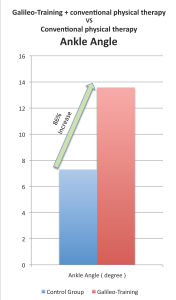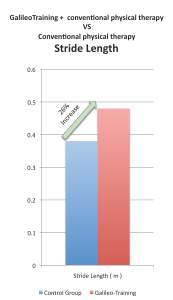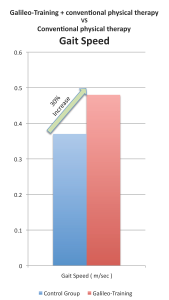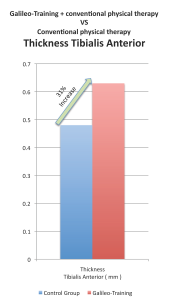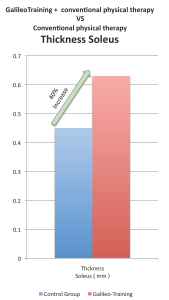Clinical Rehabilitation February 14, 2013
Effect of whole body vibration training on mobility in children with cerebral palsy: a randomized controlled experimenter-blinded study
Seung-Chul Chon, Department of Physical Therapy, College of Medical Science, Konyang University, Gasuwon-Dong, Seo-Gu, Daejeon 302-718, Republic of Korea.
Abstract
Objective: To evaluate ambulatory function and leg muscle thickness after whole body vibration training in children with cerebral palsy.
Design: A block randomized controlled trial with two groups.
Setting: Physical therapy department laboratory.
Subjects: A total of 30 (15 experimental, mean (SD) age 10.0 (2.26) years and 15 control, 9.6 (2.58)) children with cerebral palsy, 15 males and 15 females.
Interventions: The experimental group underwent whole body vibration training combined with conventional physical therapy training; the control group underwent conventional physical therapy training three days a week for eight weeks respectively.
Main outcome measures: Three-dimensional gait analyses and ultrasonographic imaging of the leg muscles were measured at pre- and post-test of intervention for eight weeks.
Results: Whole body vibration training resulted in significantly better gait speed (P = 0.001, from 0.37 (0.04) m/s to 0.48 (0.06)), stride length (P = 0.001, from 0.38 (0.18) m to 0.48 (0.18)) and cycle time (P = 0.001, from 0.85 (0.48) s to 0.58 (0.38)) in the experimental group compared with that in the control group. The ankle angle (P = 0.019, from 7.30 (4.02) degree to 13.58 (8.79)) also showed a remarkable increase in the experimental group, but not the hip (P = 0.321) and knee angle (P = 0.102). The thicknesses of the tibialis anterior (P = 0.001, 0.48 (0.08) mm to 0.63 (0.10)) and soleus (P = 0.001, 0.45 (0.04) mm to 0.63 (0.12)) muscles were significantly higher in the experimental group than in the control group. However, no significant effect was observed in the thickness of the gastrocnemius muscle (P = 0.645).

